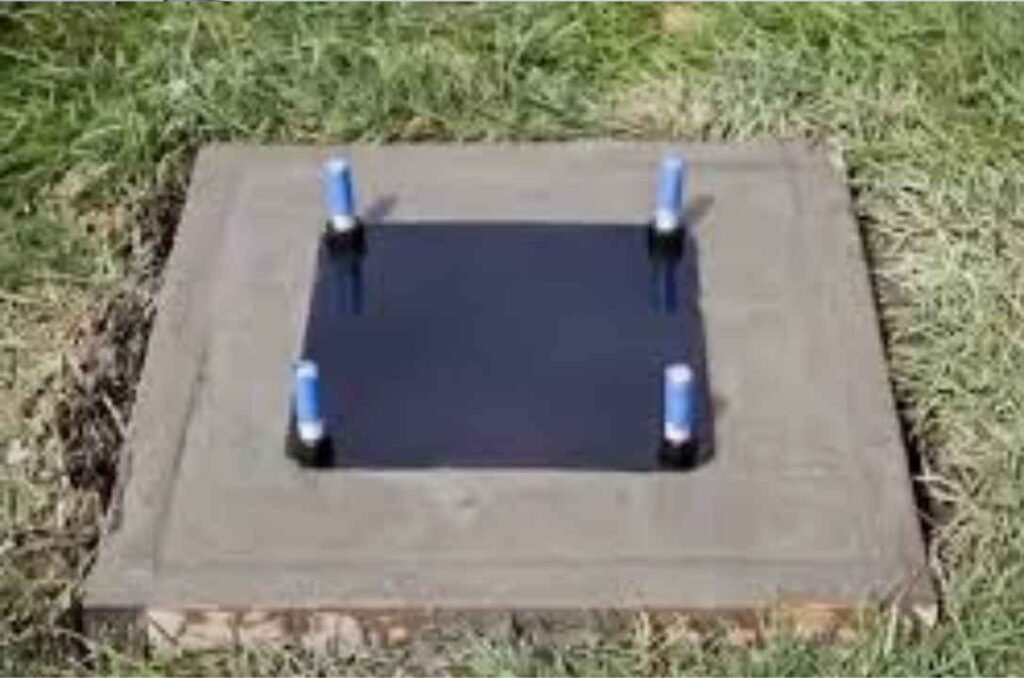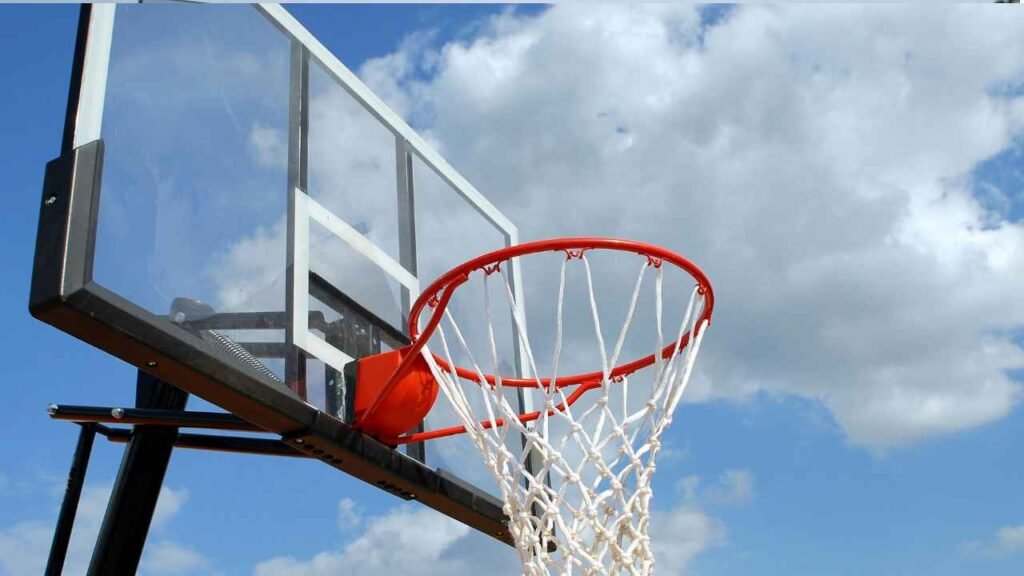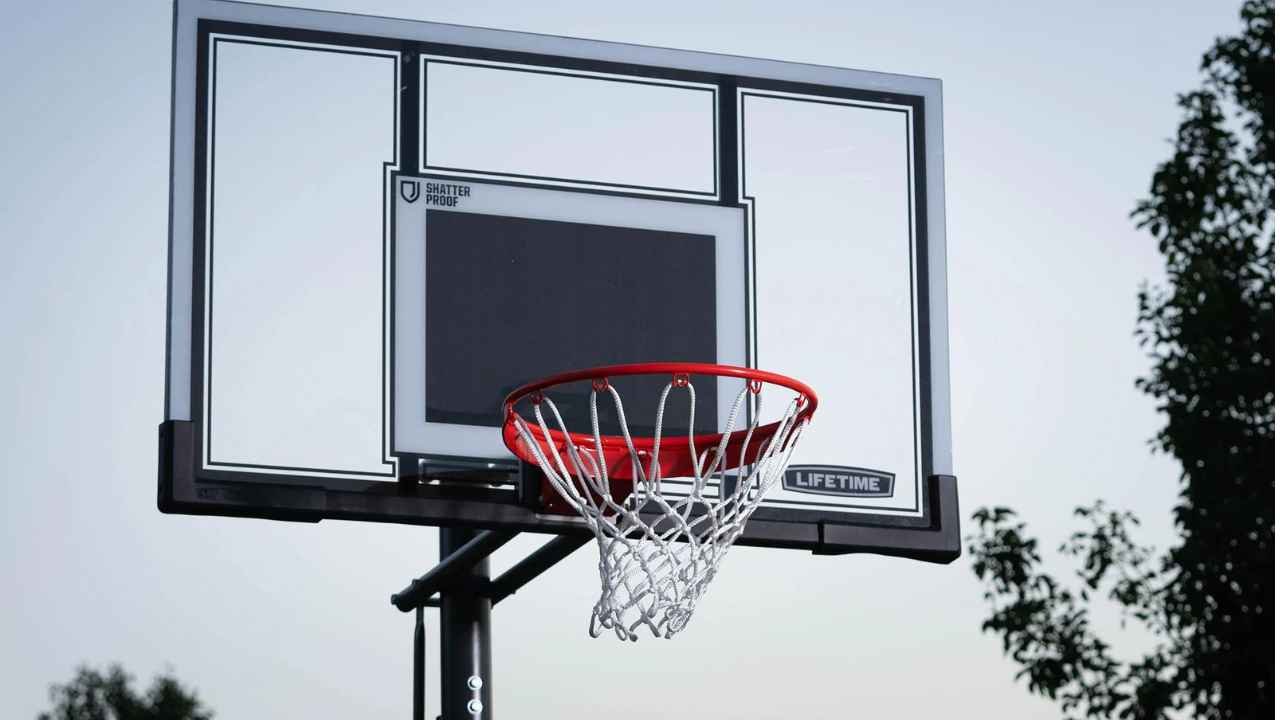For fun and exercise in your garden, put in an in-ground basketball hoop. Nonetheless, one of the most important steps is to make sure that your basketball hoop is firmly rooted in the ground. The stability and life of the hoop depend on how much concrete you use. This piece will tell you exactly how much Concrete for an In-Ground Basketball Hoop, how to install it correctly, and give you some solid advice to make sure your basketball hoop lasts.
Why proper installation is important?
The base is very important when putting in an in-ground basketball hoop. A hoop that is securely attached to the ground is safe and long-lasting, so it can survive years of use, even the hardest slam dunks. For an installation to be stable and last a long time, the concrete floor is very important.
There are different sizes of in-ground basketball hoops, but the amount of Concrete for an In-Ground Basketball Hoop is usually between 420 and 640 pounds. This is the same as 11 to 14 bags of 80-pound concrete mix. The exact requirements will usually be written in the guidebook that comes with your basketball hoop.
Explore: What is Concrete ?
The Importance of Concrete for an In-Ground Basketball Hoop
Composed of cement, water, sand, and gravel, concrete is a composite material that is used in construction. The combination of these components results in the formation of a paste that, when mixed, results in the formation of a material that is robust and long-lasting. Concrete is an excellent material to use when constructing a sturdy base for your basketball hoop because of this.
Concrete for an In-Ground Basketball Hoop is the material that provides the required support to ensure that the basketball hoop remains upright and stable. Your basketball hoop is more prone to slant, wobble, or even fall over if it does not have a good concrete foundation. This not only poses a risk to your safety but also reduces the fun you get from playing the game.
When preparing to install an in-ground basketball hoop, careful planning and execution are crucial for a successful and long-lasting installation. The process begins with selecting the right location, followed by properly preparing the site, mixing and pouring the concrete, setting the pole, and ensuring everything is done according to best practices. Each step plays a vital role in creating a stable and durable foundation for your basketball hoop.
Explore: In Ground Basketball Hoop Backboard Replacement: A Complete Guide
Selecting and Preparing the Installation Site
The first step in installing an in-ground basketball hoop is choosing the right location. It’s essential to select a flat, open area with enough space around the hoop to allow for safe play. This not only enhances the playing experience but also ensures safety. When choosing a location, avoid areas near trees, power lines, or other potential obstructions that could interfere with gameplay or pose a safety hazard.
Once you’ve identified the ideal spot, the next task is to mark the area where the hole will be dug. Precision is key here, so take the time to measure and outline the exact dimensions of the hole. Using stakes and string can help you define the area clearly, ensuring that the hole is positioned correctly and dug to the appropriate size.
Excavating and Preparing the Hole
With the location marked, the next step is excavation. The hole should be at least 18 inches deep and 24 inches wide to provide a stable foundation. However, some basketball systems may require deeper or wider holes, so it’s crucial to consult the instruction manual that came with your hoop for specific recommendations.
When digging the hole, use a post-hole digger or shovel to excavate the area, and make sure to remove any debris or loose soil from the bottom. This helps create a clean, solid base for the concrete. The right dimensions are critical; a hole that is too shallow or narrow can lead to instability, potentially causing the hoop to lean or wobble, which can be dangerous.

Mixing and Pouring the Concrete for an In-Ground Basketball Hoop
Once the hole is ready, it’s time to mix and pour the Concrete for an In-Ground Basketball Hoop. For this task, you’ll need several tools and materials, including 11 to 14 bags of 80-pound concrete mix, water, a mixing container (such as a wheelbarrow or large bucket), a shovel or mixing tool, and a level.
Start by pouring the concrete mix into your mixing container. Gradually add water, following the instructions on the concrete mix packaging. It’s important to achieve the right consistency—neither too dry nor too wet. The mixture should be thick and consistent, as this will provide the necessary strength once it cures.
After thoroughly mixing the Concrete for an In-Ground Basketball Hoop, pour it into the hole, filling it to the top. Use your shovel to spread the concrete evenly, ensuring there are no air pockets that could weaken the foundation. Properly filling and leveling the concrete is essential for the stability of the hoop.
Setting the Pole and Ensuring Stability
Before the Concrete for an In-Ground Basketball Hoop sets, you need to insert the basketball hoop pole into the center of the hole. This is a critical step, as the position of the pole determines the overall alignment and stability of the hoop. Use a level to check that the pole is perfectly vertical, adjusting as necessary to ensure it’s straight.
Proper positioning of the pole is crucial. Follow the manufacturer’s guidelines carefully, which may involve aligning the pole with pre-drilled holes or specific markings. Once the pole is in place, it’s important to secure it while the concrete cures. This can be done by using braces or stakes to hold the pole steady, preventing any movement that could cause it to tilt.
Explore: How to Install an In-Ground Basketball Hoop? Step-by-Step guide
Understanding the Curing Process
Concrete typically takes 24 to 48 hours to set, but full curing can take up to a week or more. During this time, it’s vital not to disturb the pole, as any movement could compromise the foundation’s integrity. To ensure proper curing, it’s a good idea to lightly mist the Concrete for an In-Ground Basketball Hoop with water periodically. This prevents the surface from drying too quickly, which can lead to cracks.
If there’s rain in the forecast, cover the area with a tarp to protect the curing concrete. It’s important not to rush this process; using the hoop before the concrete has fully cured can lead to instability and potential damage, undermining the entire installation.
Final Adjustments and Ensuring Stability
After the concrete has fully cured, it’s time to check the pole for stability. Give it a gentle push to ensure it’s completely immobile. Any signs of wobbling or leaning could indicate that the installation wasn’t successful, and you may need to make adjustments. If necessary, you can make final leveling adjustments to ensure the pole is perfectly vertical.

Once you’re satisfied with the pole’s stability, you can attach the backboard and hoop according to the manufacturer’s instructions. This is the final step in the installation process, and once complete, your hoop should be ready for play.
Long-Term Maintenance and Common Mistakes to Avoid
Maintaining your basketball hoop over time is essential for ensuring its longevity. Periodically inspect the pole and concrete base for any signs of wear or damage. Look for cracks in the concrete, rust on the pole, or any shifting that could indicate instability. Address any issues promptly to prevent further damage and maintain the hoop’s stability.
In colder climates, it’s wise to apply a weather sealant to the concrete base to protect it from freezing and cracking during winter months. This simple step can significantly extend the life of your basketball hoop.
When installing the hoop, avoid common mistakes such as not using enough concrete or improper mixing techniques. Skimping on concrete can lead to a weak foundation, while mixing the concrete too dry or too wet can compromise its strength. Additionally, don’t skip the leveling process; ensuring the pole is perfectly level is crucial for the long-term stability of the hoop. Taking your time during installation and following best practices will result in a safe and durable basketball hoop that can be enjoyed for years.
Explore: How to Remove an In-Ground Basketball Hoop? DIY
Conclusion
Installing an in-ground basketball hoop requires careful planning and execution, particularly when it comes to the concrete foundation. By following the guidelines in this article, you can ensure that your basketball hoop is securely anchored and ready for years of enjoyment. Remember, the key to a successful installation is taking your time and paying attention to detail. Good luck with your project!
FAQs
1.How Much Does Concrete Weigh?
Concrete typically weighs around 2,400 pounds per cubic yard, or roughly 150 pounds per cubic foot. This weight can vary slightly depending on the mix and the specific materials used.
2.Can I Use Quick-Setting Concrete?
Yes, you can use quick-setting concrete, which is ideal for projects that need to be completed swiftly. However, it sets much faster than standard concrete, so you’ll need to be prepared to work quickly to shape and finish it.
3.How Deep Should the Hole Be?
The hole for setting concrete should be at least 18 inches deep to ensure stability, though some projects or soil conditions may require a deeper hole. It’s essential to follow the specific recommendations for your project to achieve the best results.
4.What If the Concrete Cracks?
Small cracks in concrete are common and typically not a cause for concern. However, large or expanding cracks may indicate a problem with the foundation or insufficient reinforcement. In such cases, you may need to reinforce the base or apply additional layers of concrete to prevent further damage.
5.How Long Before I Can Use the Hoop?
After pouring the concrete, it’s crucial to allow it to cure for at least 72 hours before using the hoop. This waiting period ensures that the concrete has gained sufficient strength and stability to handle the weight and stress of regular use.





